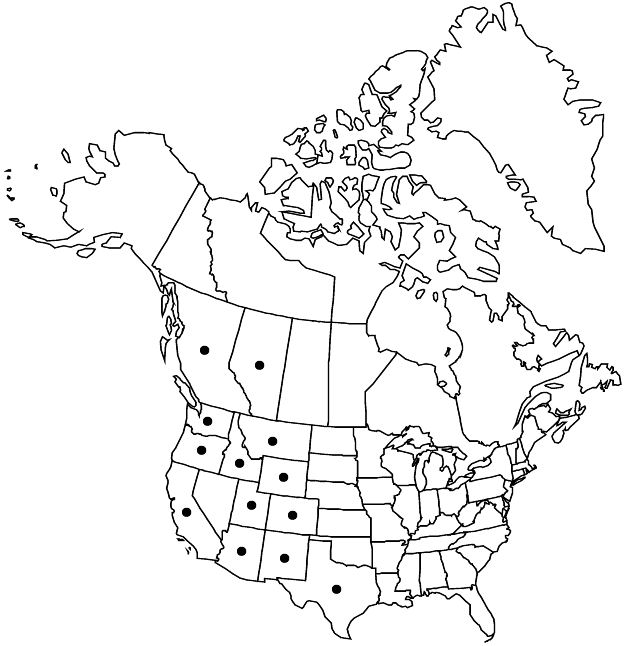Fragaria vesca subsp. bracteata
Canad. J. Bot. 40: 872. 1962.
Leaves green; terminal leaflet blade obovate to slightly rhombic, length/width 1.2–1.8, teeth: relative number 0.2–0.6, relative size 1.5–3.7, terminal tooth longer than or equal to adjacent teeth. Flowers usually bisexual, sometimes pistillate (gynoecious plants), 15.3–23.8 mm diam.; hypanthium 11.8–21.2 mm diam.; petals usually white, sometimes pinkish, widely obovate to widely depressed-obovate, margins usually overlapping, sometimes distally crenate. Achenes in shallow pits or deeply embedded; bractlets clasping or spreading to slightly reflexed, sepals clasping; torus wine red, not shiny (skin slightly hirsute), usually oblong-ovoid, sometimes globose, usually not easily separating from hypanthium. 2n = 14.
Phenology: Flowering spring.
Habitat: Forest edges, open forests, meadows, stream banks, roadsides, usually shady and moderately damp
Elevation: 50–3800 m
Distribution

Alta., B.C., Ariz., Calif., Colo., Idaho, Mont., N.Mex., Oreg., Tex., Utah, Wash., Wyo., Mexico (Chiapas), Mexico (Chihuahua), Mexico (Coahuila), Mexico (Distrito Federal), Mexico (Durango), Mexico (Michoacán), Mexico (San Luis Potosí), Mexico (Veracruz), Mexico (Zacatecas)
Discussion
Plants of subsp. bracteata with pinkish petals are relatively rare and have been called forma helleri (Holzinger) B. Boivin.
Selected References
None.
Lower Taxa
"thin" is not a number. "thick" is not a number."thin" is not a number.